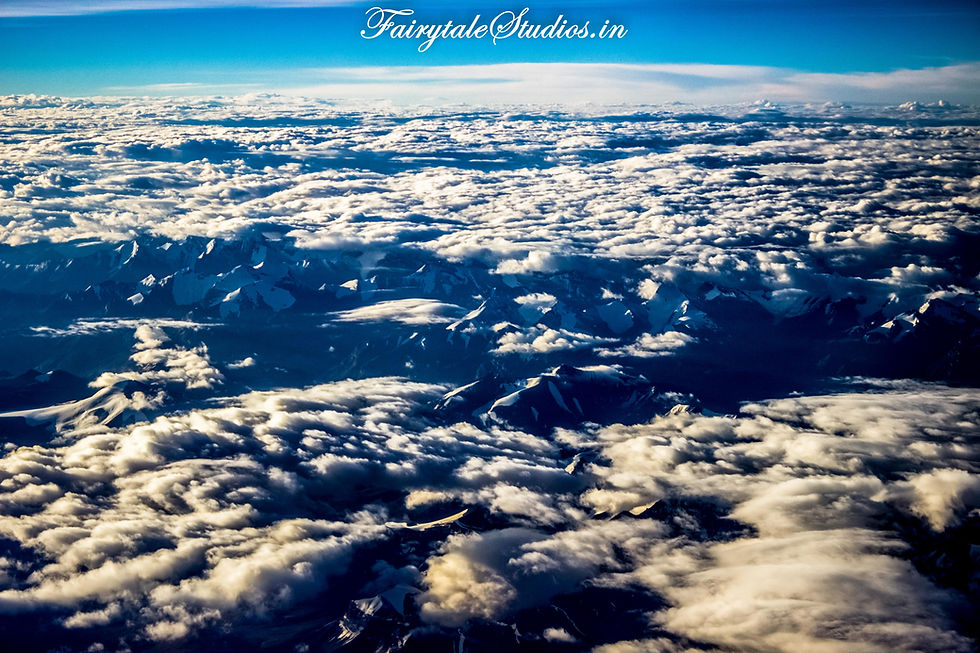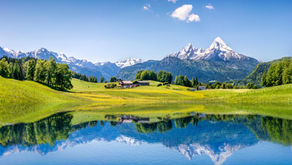A day in Leh, Ladakh - The Zanskar Odyssey
- Fairytale Studios

- Aug 20, 2016
- 5 min read
Updated: Jul 26, 2024
Day 1 of the trip
Hidden in the remotest reaches of Himalayas lies one of the most inaccessible places in the world named Zanskar Valley. Spread over an area of 7000 square kilometres (which is 11 times bigger than Mumbai), Zanskar Valley is located in the Ladakh region, a Union Territory in India. The only motorable road to Zanskar Valley is from Kargil through Penzi La pass which remains closed for nearly eight months every year due to heavy snowfall. However, recently a new road has been constructed to reach Padum (headquarters of Zanskar Valley) from Darcha in Lahaul Valley of Himachal Pradesh. The region of Zanskar Valley stands out as one of the few places in the Himalayas where traditional Tibetan culture, society, and buildings have survived both - the Chinese cultural revolution & global modernisation. This isolation and purity of Zanskar culture, as well as some of the most magnificent landscapes in this region of Indian Himalayas, lured us to visit this 'lost valley'.
Though the road leading to Zanskar Valley was completed in the late '70s, it has always remained an unpaved & graded (kacha), which makes the journey extremely difficult. Due to this, the people of Zanskar Valley have been living in nearly total isolation throughout their history until recently. 14,000 people scattered across numerous villages depend on the yak and mountain farming for livelihood. Without any doubts, the people of Zanskar Valley have lived a simple, spiritual existence. In this series - The Zanskar Odyssey, we take you through our travel journey through this region and give you a glimpse into unique people, customs, traditions and landscapes of Zanskar Valley. If you have any interest in exploring and understanding different people and places of the world, this 'The Zanskar Odyssey' is bound to captivate you.
We joined Saurabh Chatterjee, a renowned professional photographer based in Hyderabad who also conducts photo tours (www.siaphotography.in). The plan was to land in Leh and then reach Kargil before embarking on the strenuous journey through Rangdum to our final destination Padum, capital of Zanskar Valley. The itinerary was also designed to ensure we cover Stongdey Gustor festival at Stongdey monastery near Padum before heading back to Srinagar to catch a flight back home.
After a pretty sleepless night, we took off in an early morning flight to Leh from Mumbai. We got some amazing views from the flight before reaching Leh. All the tiredness suddenly disappeared seeing the vast snow-capped mountains and barren desert. Ladakh is a cold desert and Leh is, in fact, a bit of a city in the desert. Inhabited by people of Indo-Aryan and Tibetan descent, the region stands at 3000 meters above sea level and is one of the most sparsely populated regions in Ladakh. No train routes exist to reach Ladakh. One can reach there either by air from various parts of India or by road (from Manali or Srinagar). Ladakh has recently become a union territory. It surely is a unique and special place for everyone who visits it and no words can do justice to what you see and experience here.




Leh’s airport is small but unique with colourful decor. It is one of the highest commercial airports in the world. A quick drive in a pre-paid taxi to our hotel and an introductory session with the rest of the members of the photo-tour marked the beginning of our journey to Zanskar Valley. After half a day of rest to acclimatise ourselves with the high altitude and cold weather, we decided to go for a little sightseeing.
Stakna Monastery, Leh:
A Ladakh trip is incomplete without visiting its beautiful monasteries. Our first place of visit in Leh was Stakna monastery. It is located some 25 odd kilometres from the city of Leh on Leh-Manali highway. The roads are well built and smooth.
The monastery is located on a hill besides Indus River. We crossed a wooden bridge over Indus river full of colourful Tibetan flags to reach Stakna monastery. From atop the hill where the monastery was located, we got a picturesque view of the flowing river and the copper coloured sand mountains. We could also see the Thiksey Monastery which we were going to visit next. Stakna monastery is centuries old (built in 16th Century) and simple yet colourful with many items of Buddhist art like stupas, statues, wall paintings, swords and ancient Buddhist scriptures. The ‘Manis’ outside the main building of Stakna monastery completes its antiquated look.





Thiksey Monastery, Leh:
We next visited Thiksey monastery which is just 5-6 kilometres back towards Leh on the same road from Stakna monastery. It was past 6 PM and hence was monastery’s closing time, thus we weren’t able to see the interiors of Thiksey monastery. This monastery, however, resembles the Potala Palace of Lhasa and is the largest monastery of Ladakh. It was built in the 15th Century. It has a fort-like structure from outside and is painted red and white. The path to the main worship place is like a hill slope. Various large Manis are placed enroute the main path. It offers an excellent view of the Indus valley and the whole setting is so calm and peaceful that it puts you in a silent trance.
We were fortunate to see the sunset in the orange and red coloured clouds across the horizon and the moon rising on the other side at the same time from atop the Thiksey monastery parking lot. Our excellent team of photographers got some amazing clicks of the monastery and the Indus valley. Shadows of clouds were present everywhere around us but seldom seen. Ladakh offered us numerous opportunities to capture the constantly changing interplay of lights and shadows falling on its massive barren mountains. It had been a long day and it was getting dark. Driving through the Leh market, we reached back to our hotel and slept dreaming of the next day’s exciting journey.






Though we would have loved to stay more at Leh and explore other must-visit places in the area, we were more excited to start our journey to Zanskar Valley and see what it had in store for us. Due to difficulty in accessing Zanskar Valley, its untouched raw beauty, and the fact that very few tourists visit it, the valley was far more enticing to us than Leh. This was just day 1 of our journey and we already felt amused by what we had seen. Keep reading the Zanskar odyssey to see how our journey unfolds. Read day 2 of our journey from Leh to Kargil and the surprise that awaited us there.
It will be great if you can let us know what you thought about the blog, pictures or the trip. Feel free to comment below.
Read all our blogs of the series The Zanskar Odyssey by clicking on the links below:


































Commentaires